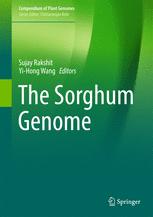

Most ebook files are in PDF format, so you can easily read them using various software such as Foxit Reader or directly on the Google Chrome browser.
Some ebook files are released by publishers in other formats such as .awz, .mobi, .epub, .fb2, etc. You may need to install specific software to read these formats on mobile/PC, such as Calibre.
Please read the tutorial at this link: https://ebookbell.com/faq
We offer FREE conversion to the popular formats you request; however, this may take some time. Therefore, right after payment, please email us, and we will try to provide the service as quickly as possible.
For some exceptional file formats or broken links (if any), please refrain from opening any disputes. Instead, email us first, and we will try to assist within a maximum of 6 hours.
EbookBell Team

4.4
82 reviewsThis book provides insights into the current state of sorghum genomics. It particularly focuses on the tools and strategies employed in genome sequencing and analysis, public and private genomic resources and how all this information is leading to direct outcomes for plant breeders. The advent of affordable whole genome sequencing in combination with existing cereal functional genomics data has enabled the leveraging of the significant novel diversity available in sorghum, the genome of which was fully sequenced in 2009, providing an unmatched resource for the genetic improvement of sorghum and other grass species. Cultivated grain sorghum is a food and feed cereal crop adapted to hot and dry climates, and is a staple for 500 million of the world’s poorest people. Globally, sorghum is also an important source of animal feed and forage, an emerging biofuel crop and model for C4 grasses, particularly genetically complex sugarcane.